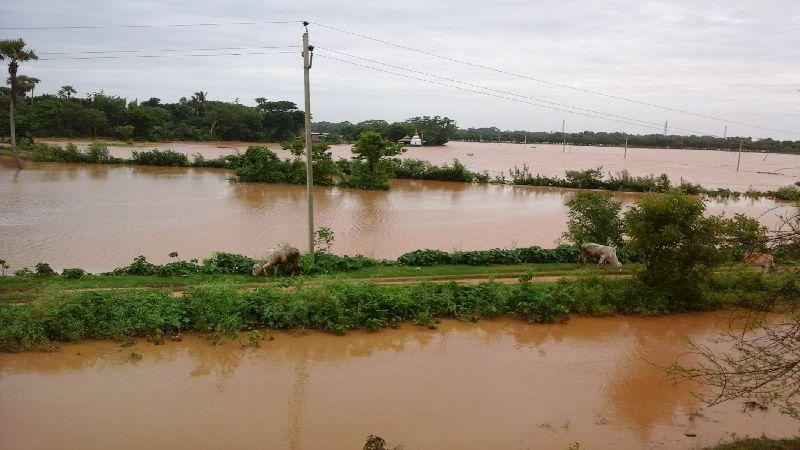
Photo by Deepak Das
Climate change has given rise to unpredictable weather conditions all across the globe. Severe cyclones, extreme flooding, punishing drought and uncontrolled wildfires have become all too common. India is not immune to it and has spent INR 4745 crores on average every year on flood-related damages in the past few decades. While previous research has used global climate change models to drive national-level policies that deal with flood hazards, there is a lack of input from such studies to make hazard predictions at the level of every village.
In a recent study, researchers from the Indian Institute of Technology Bombay (IIT Bombay) and the Indian Institute of Technology Kharagpur (IIT Kharagpur) have used a combination of global climate models along with local rainfall and river flow models to determine the odds of flood inundation of individual villages. They demonstrated their approach by predicting the flood risks for villages in Jagatsinghpur district of Odisha. The study, funded by the ISRO-IITB Space Technology Cell, and the Department of Science & Technology, Government of India (SPLICE-Climate Change Programme), was published in the journal Science of the Total Environment.
Jagatsinghpur lies in the delta of Mahanadi river basin, which is prone to floods due to rainfall and high tides from the Bay of Bengal as well as overflowing of the river caused by heavy deposition of silt. Since the area is predominantly agricultural, these floods cause massive damages to crops and livelihoods of a large number of residents. In the current study, the researchers have used climatic and weather data for the Mahanadi river basin and information about the water depth and velocity of the river and its distributaries to estimate the flood patterns in about 1300 villages in the region.
“Such detailed and focussed studies at the level of every village have not ever been conducted for any region,” says Prof Subimal Ghosh from IIT Bombay, one of the researchers involved in the study.
Although climate data captures the global scenario of sea-surface temperatures and wind patterns, it is useful in predicting regional weather patterns, like rainfall, which determines the river and surface water flow in a particular region.
“Jagatsinghpur district was very adversely affected by the Super Cyclone of 1999. Since then, its district web portal is being very well maintained, allowing us to look at the data closely,” explains Prof Karmakar.
The researchers used the data to predict the probability of floods for the individual villages in the district. They categorised the villages according to their risk of flood hazard into five classes: very low, low, moderate, high, and very high. Then they compared the classification of the villages from 1979–2005 to their predictions in the near future, 2026–55. While around 300 villages transformed from higher to lower hazard classes, close to 450 villages transformed from lower to higher hazard classes. Although 519 villages remained in the same hazard class, they showed a greater chance of flooding in the future compared to the past.
Of the 122 villages in Jagatsinghpur that fall under the very high hazard category, the researchers identified sub-districts of Earsama, Tirtol, and Raghunathpur, as the ones most prone to flooding. The study highlights that climate change will only worsen the situation over time. State authorities are already taking long-term disaster planning measures, such as regulating the flood water using the Hirakud Dam on the Mahanadi, constructing embankments along the rivers, planting mangroves along the Bay of Bengal coastline, and resettlement of residents in the flood-prone areas to elevated areas. While such activities are indispensable, the study shows that they are not enough to mitigate potential damages to life and property.
The Mahanadi river delta is mostly agricultural land, where the residents have been living for generations. Despite being aware of the flood risks involved, neither would they want to move out nor do they have enough resources to move, say the researchers. They hope that the district level policymakers will take into account the results of their study to climate-proof the area.
The team has constructed novel fine resolutions maps that classify the villages based on their priority levels. This will help policymakers direct their disaster planning efforts towards villages that need urgent attention. These maps will be available on the district web portal for consultation by the public.
“We can rationalise the evacuation plans by identifying villages which are less prone to disasters,” says Prof Karmakar. “Knowing the hazard risks will help us use the existing transportation network more effectively,” he adds. The researchers plan to share these maps with the National Remote Sensing Centre (NRSC) to facilitate future disaster management for the other flood-prone coastal districts in India.






